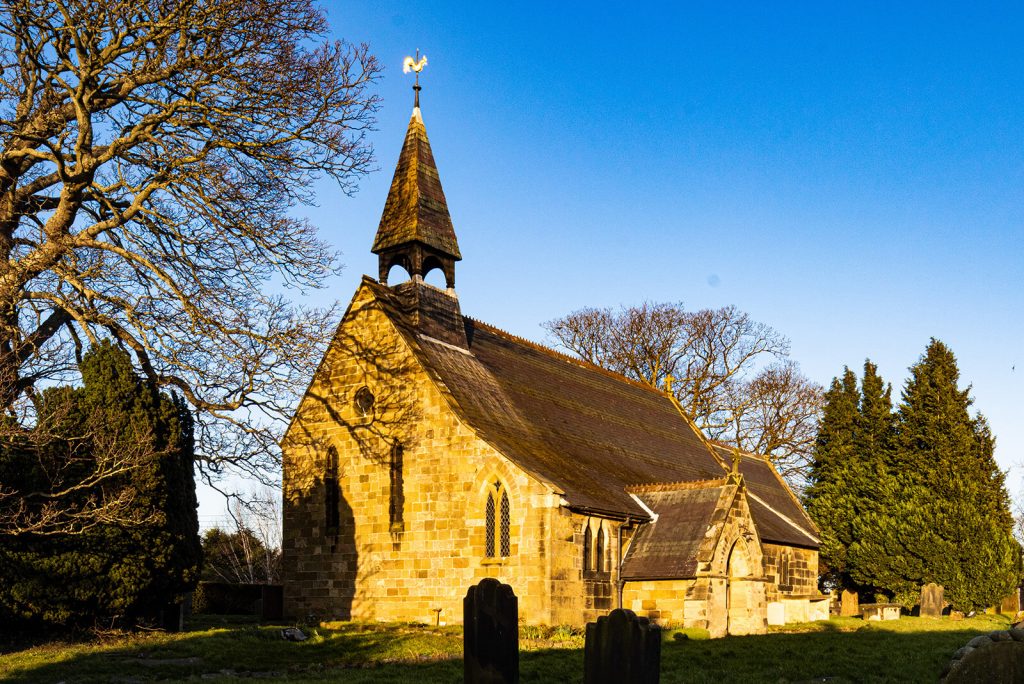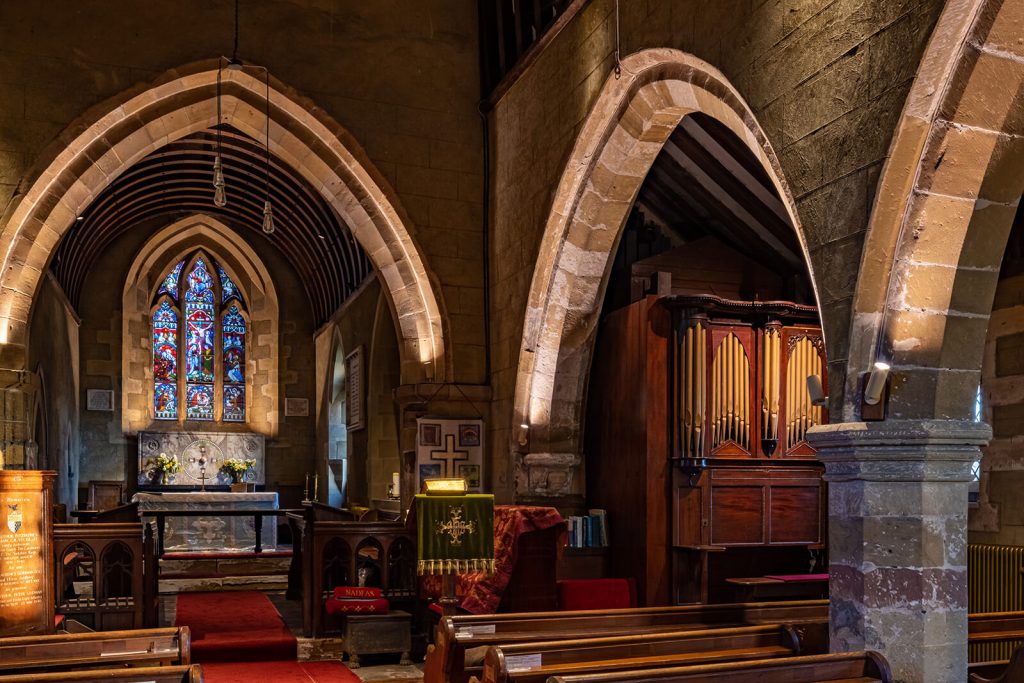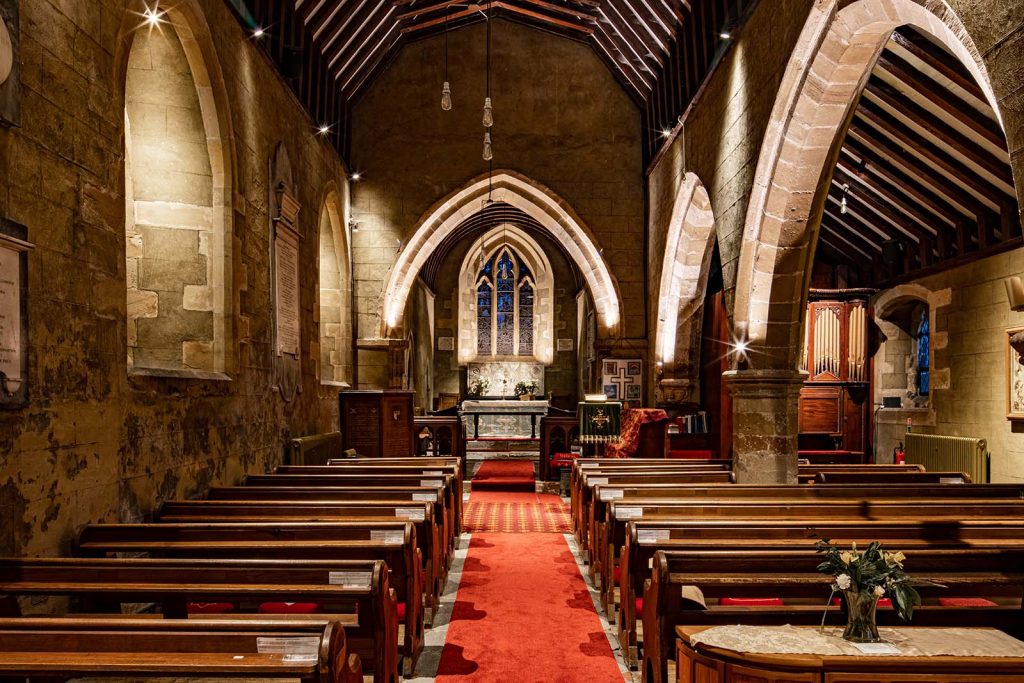Church lighting for better functionality, aesthetics and economy

St Eloy’s is a beautiful, little Grade II listed church in North Yorkshire. Brilliant Lighting designed the lighting in 2018. Our plans to take photos in 2020 were scuppered by Covid-19 and we’ve only been able to do a full photoshoot earlier this year. We’ll publish the case full study shortly but it’s a good opportunity to look at some very practical guidance from the Church of England on church lighting and see how that translates to a beautiful, practical and efficient lighting scheme in practice.
The Church of England Guidance notes (see the Related Links section below) takes a multi-level approach. It recognises that alongside the practical benefits of a well designed lighting scheme there are aesthetic benefits as well.
Additionally, lighting can provide dramatic effects and create an atmosphere and enhance the building’s architectural characteristics. The quality and direction of the light is as important as its intensity, and a well designed lighting scheme will take the above into consideration.
The Guidance notes start with expectations of what a good lighting scheme can deliver. Some are obvious. Better lighting makes it easier to see and move around easily and safely. It makes it easier to see others: celebrant, choir and congregation. The notes also recognise the role of light in enhancing the building’s spatial qualities, points of interest. Light also plays a role in enhancing liturgy.

The guidance makes some practical suggestions on how to realise the benefits of good lighting. It recommends developing a Design Brief. We agree; it’s really important that everyone is aligned on what the reasons are for change and what is hoped to be achieved. They suggest this will make it easier to engage with architects / surveyors and any specialist consultants. They strongly recommend bringing in a specialist, independent lighting consultant early. Again we agree; lighting design in sensitive, listed or heritage environments is a specialist discipline.
St Eloy’s wanted to make the church more inviting, encourage a wider audience and make the building more suitable for larger events. Reduced maintenance and efficiency were important considerations as was minimising the impact on the fabric of the Grade II listed building.
We developed the scheme using discreet surface mounted fittings with carefully planned cable routings. The Church’s guidance notes recognise the importance of good fittings and talk about the possibilities of concealing fittings. That’s not always possible but it is possible to reduce the visual impact of fitting by carefull matching fittings colours to their environments.
Lighitng control systems are a welcome inclusion in the guideance notes. There the benefits that are identified focus on ease of use and the flexibility that a lighting control system offers. I love the introduction to this on the Church of England’s website.
It’s important to make sure that your lighting system is easy to operate. Most modern lighting systems have a computerised control system. This will be pre-set by the lighting designer to meet your needs.
Ease of use is absolutely vital but there’s another reason that using a lighting control system can bring huge benefits. Using the right control system with a full range of dimming protocols can reduce the amount of cabling required. With St Eloy’s being a Grade II listed building, reducing cable runs is massively important. We specified Lutron HomeWorks QS and a digital dimming protocol, DALI which is more commonly seen in larger commercial environments. The combination of the two gave us beautiful dimming and the ability to offer scenes for particular usages: christenings, concerts, services, meetings etc, but equally important it allowed us to use less cabling and to run less heavy twin & earth cable.
We love the focus on trialling in the Church’s suggested approach. We always encourage our clients to see fittings in action, to see them working in the environment they are proposed for. Again, this is a quote from the guidance notes and again it’s sage advice.
The cost of trialling is going to be a lot less than the cost of not trialling.

St Eloy’s is a beautiful church and we hope we’ve played a part in making it more accessible and more attractive to a wider group of people. Church lighting projects are very special and bring their own complications but the end results can be fabulous. Reading the Church of England’s guidance notes again brings home just how important early planning and clear communication is in projects that have so many passionate and committed stakeholders. When we first posted this, the guidance document felt slightly dated with insufficient coverage of LED lighting (it dated from 2016). It’s been substantially updated and republished in May 2022. The core principles remain sound but it’s now a more up-to-date look with a better view of the role of LED lighting technology in Church Lighting. It’s well worth a read.
Updated: 19/09/2022
The Case Study for St Eloy’s is now live. Use the link below.
Case Study
Related Links





